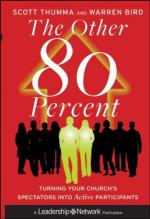Among all the Figures in Architecture, there are none that have a greater Air than the Concave and the Convex, and we find in all the Ancient and Modern Architecture, as well in the remote Parts of China, as in Countries nearer home, that round Pillars and Vaulted Roofs make a great Part of those Buildings which are designed for Pomp and Magnificence. The Reason I take to be, because in these Figures we generally see more of the Body, than in those of other Kinds. There are, indeed, Figures of Bodies, where the Eye may take in two Thirds of the Surface; but as in such Bodies the Sight must split upon several Angles, it does not take in one uniform Idea, but several Ideas of the same kind. Look upon the Outside of a Dome, your Eye half surrounds it; look up into the Inside, and at one Glance you have all the Prospect of it; the entire Concavity falls into your Eye at once, the Sight being as the Center that collects and gathers into it the Lines of the whole Circumference: In a Square Pillar, the Sight often takes in but a fourth Part of the Surface: and in a Square Concave, must move up and down to the different Sides, before it is Master of all the inward Surface. For this Reason, the Fancy is infinitely more struck with the View of the open Air, and Skies, that passes through an Arch, than what comes through a Square, or any other Figure. The Figure of the Rainbow does not contribute less to its Magnificence, than the Colours to its Beauty, as it is very poetically described by the Son of Sirach: Look upon the Rainbow and praise him that made it; very beautiful it is in its Brightness; it encompasses the Heavens with a glorious Circle, and the Hands of the [most High [5]] have bended it.
Having thus spoken of that Greatness which affects the Mind in Architecture, I might next shew the Pleasure that arises in the Imagination from what appears new and beautiful in this Art; but as every Beholder has naturally a greater Taste of these two Perfections in every Building which offers it self to his View, than of that which I have hitherto considered, I shall not trouble my Reader with any Reflections upon it. It is sufficient for my present Purpose, to observe, that there is nothing in this whole Art which pleases the Imagination, but as it is Great, Uncommon, or Beautiful.
O.
[Footnote 1: Grounds]
[Footnote 2: two]
[Footnote 3: Protogenes’s]
[Footnote 4: Dinocrates.]
[Footnote 5: [Almighty]]
* * * * *
No. 416. Friday, June 27, 1712. Addison.
‘Quatenus hoc simile est oculis, quod mente videmus.’
Lucr.




